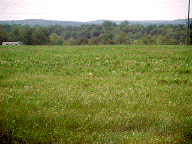 |
|
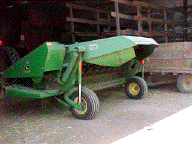 |
| 1.This
field of hay is ready to be cut. |
|
2.
The haybine (a large mower) gets attached to the tractor. |
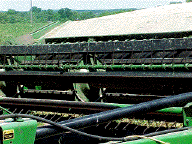 |
|
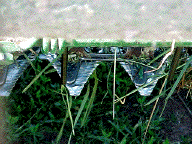 |
| 3.
The haybine not only cuts but conditions the hay. |
|
4. These cutters on the haybine slide back and
forth to complete the cut. This cutting bar is also called the
sickle bar. |
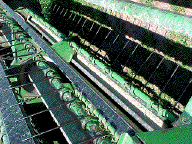 |
|
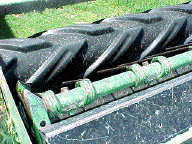 |
| 5.
The reel of the haybine pushes the hay over the sickle bar into
the conditioner rollers. |
|
6.
The two conditioner rollers (dark black with treads) crack the
stems to allow the hay to dry faster. |
 |
|
 |
| 7.
Cut hay sits in the sun for two or more days depending on the
amount of good sun. |
|
8.
The tedder, attached to a tractor, loosens and aerates the hay. |
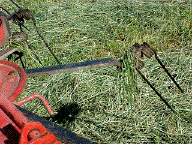 |
|
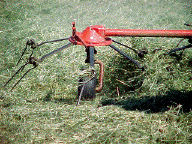 |
| 9.These finger-like
rods lift the hay. |
|
10. They spin
in a circle on a wheel and axle. Proper drying is assisted by
this lifting action of the tedder. |
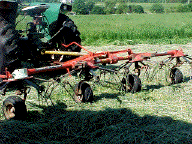 |
|
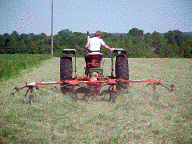 |
| 11. A series
of four teaders are linked together. |
|
12. Note the
amount of dust created by this operation. Birds often look for
insects behind the farmer's path. |
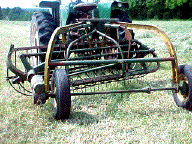 |
|
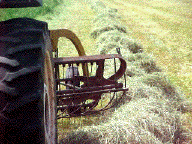 |
| 13. Next,
when the hay is dry enough, the hay is raked using this machine
attached to a tractor. |
|
14.The tumbling
of the hay in this machine creates a long pile called a wind
row. |
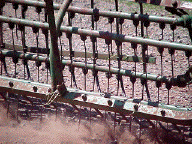 |
|
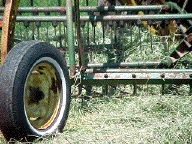 |
| 15. Notice
how the rake tines work in a row like a comb to move the hay. |
|
16.
Here is the rake in action. |
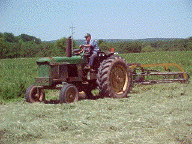 |
|
 |
| 17.
Mr. Weikel drives up and down the field creating a series of
wind rows with the rake. |
|
18.
After the wind rows are prepared it will soon be time to bale
the hay. |